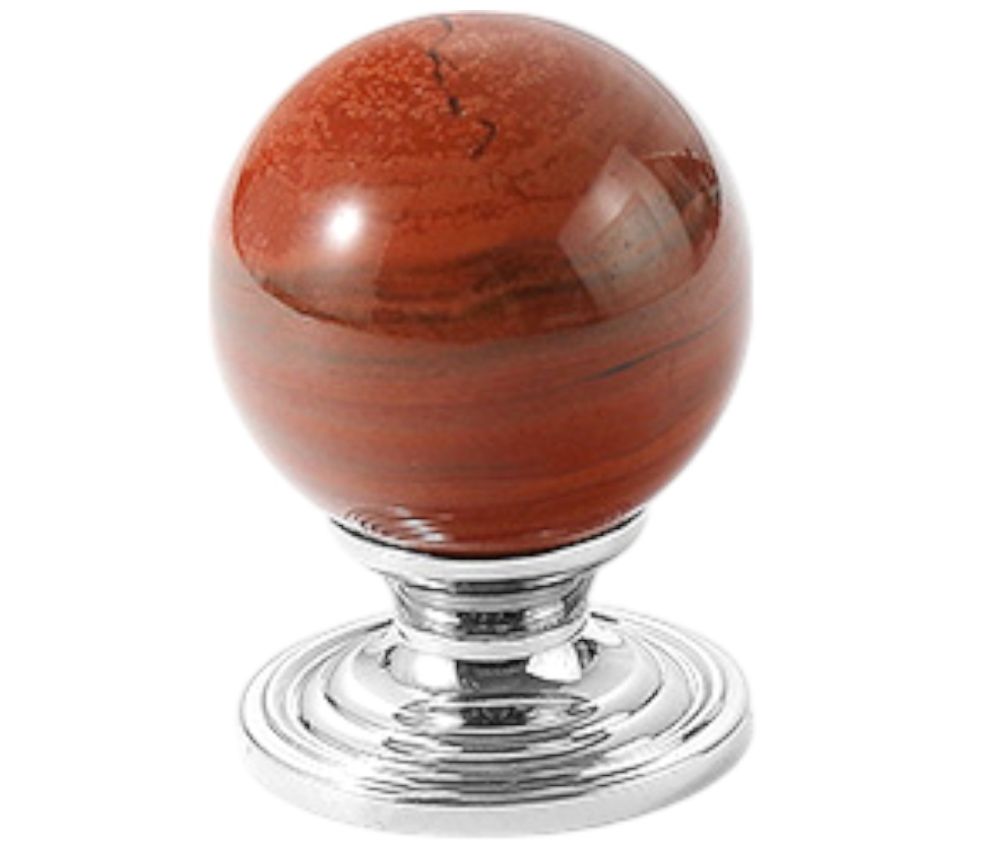We use cookies to make your experience better.
TimmersGems has a new website, existing customers also need to register again.
Red jasper furniture knob for doors or drawers, with a 25 mm gemstone sphere.
These gemstone knobs can give modern or classic furniture a beautiful new look. Suitable for doors and drawers, they include mounting hardware to securely fasten the knob.
SKU
122444
Gemstones are rare minerals that are often processed and incorporated into jewellery and decorative objects. Gemstones possess the following characteristics: Beauty. This term includes visual aspects such as colour, lustre, fire, transparency, and light effects. Durability. This considers hardness, fragility/cleavage, and chemical resistance. Rarity. This category considers how often a product occurs in nature. Gemstones can be cut into many different shapes. The main difference is that cabochon has a convex shape, while faceted has multiple facets. When cutting, various properties of the stone are considered, including colour, colour distribution, inclusions, special light effects, dispersion, and fractured and cut surfaces. They are processed into necklaces, earrings, bracelets, and many other jewellery items, but gemstones are also used in industry for processing. Well-known gemstones include diamonds, rubies, emeralds, sapphires, aquamarines, topazes, tourmalines, amethysts, citrines, carnelians, opals, onyxes, turquoise, lapis lazuli, and garnets. In the 18th and early 19th centuries, it was fashionable to make jewellery that incorporated a person's name or initials. The choice of gemstones was guided by the first letter of the gemstone's name, thus giving rise to the gemstone alphabet. Similar acrostic jewellery, expressing sentiments with gemstones, was also created during the 19th century. The most well-known is the English "regard" ring, an engagement ring in which the word "regard" was formed by the gemstones ruby, emerald, garnet, amethyst, and diamond.
| Dimensions | 25mm |
|---|---|
| Country of Manufacture | China |












